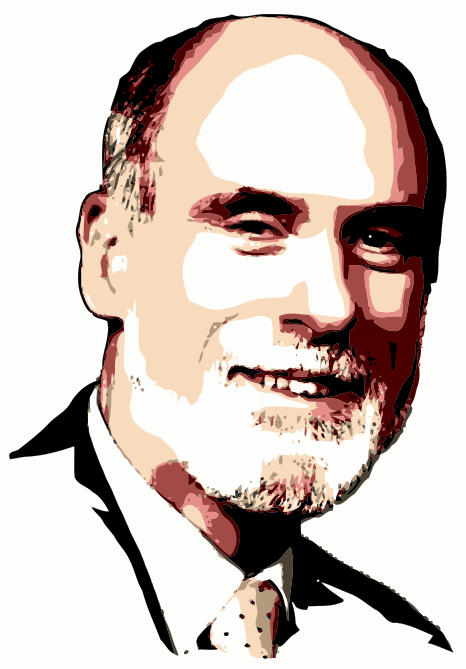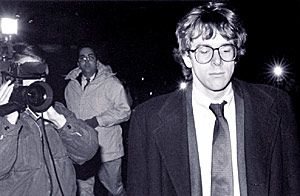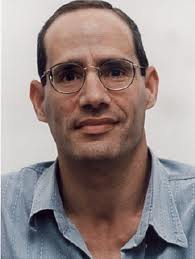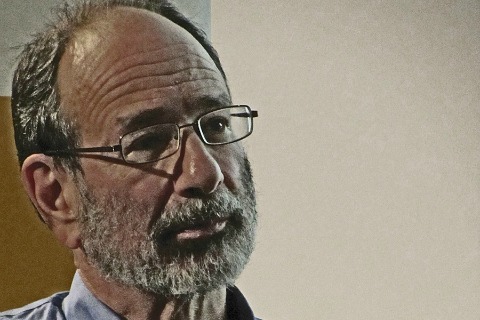
why |

are |

these |

people |

relevant? |
NETWORKED LIFE
Networked and Social Systems Engineering (NETS) 112
Fall 2013
Tuesdays and Thursdays 10:30-12, Berger Auditorium, Skirkanich Hall
Prof. Michael Kearns
Jump to the course schedule.
COURSE DESCRIPTION
Networked Life
looks at how our world is connected -- socially, strategically
and technologically -- and why it matters.
The answers to the questions above are related. They have been the subject of a fascinating intersection of disciplines, including computer science, physics, psychology, sociology, mathematics, economics and finance. Researchers from these areas all strive to quantify and explain the growing complexity and connectivity of the world around us, and they have begun to develop a rich new science along the way.
Networked Life will explore recent scientific efforts to explain social, economic and technological structures -- and the way these structures interact -- on many different scales, from the behavior of individuals or small groups to that of complex networks such as the Internet and the global economy.
This course covers computer science topics and other material that is mathematical, but all material will be presented in a way that is accessible to an educated audience with or without a strong technical background. The course is open to all majors and all levels, and is taught accordingly. There will be ample opportunities for those of a quantitative bent to dig deeper into the topics we examine. The majority of the course is grounded in scientific and mathematical findings of the past two decades or less (often much less).
Fall 2013 is the tenth offering of
Networked Life.
You can get a detailed sense for the course by visiting the extensive course web pages from past years:
[Fall 2012]
[Fall 2011]
[Spring 2010]
[Spring 2009]
[Spring 2008]
[Spring 2007]
[Spring 2006]
[Spring 2005]
[Spring 2004]
(Note: the Fall 2011 version used a different course management platform than
the simple HTML site we'll be using this year, so it might be easiest to peruse
the 2012 and earlier sites to get a sense of how the course unfolds.)
There is also a greatly condensed version of this class offered to the general public as part of the online education platform Coursera. All students should create a (free) Coursera account, and sign up for the session of Networked Life there that begins on Tuesday, September 3, 2013. See the course schedule for information on how we will make use of the online material and how to sign up.
Networked Life is the flagship course for Penn Engineering's recently launched Networked and Social Systems Engineering (NETS) program. Throughout the course we will foreshadow material that is covered in greater depth in later NETS program courses.
REQUIRED TEXTS
The following three books are required texts for the course:
NOTE: The books are not yet in the Penn bookstore, but "The Tipping Point" should be in stock there by Thursday (Sep 5) or Friday.
In addition to readings from these texts, there will be frequent articles from the recent scientific and popular literature that will be provided directly on this web page at the appropriate points in the syllabus.
COURSE PERSONNEL
Prof. Michael Kearns, Course Instructor
mkearns@cis.upenn.edu
Levine Hall 509
Office hours: Tuesdays 12-1 PM (right after lecture), or by appointment
Lili Dworkin,
Teaching Assistant
ldworkin@seas.upenn.edu
Office hours: Wednesdays 3-4, Levine 614, or by appointment
LECTURE LOCATIONS AND TIMES
Attendance at the main lectures is considered mandatory for all enrolled students. They are held Tuesdays and Thursdays 10:30-12 in Berger Auditorium of Skirkanich Hall. There are no recitations for the course.
COURSE PREREQUISITES
Networked Life has no formal prerequisites, and is meant to be accessible to a broad range of students across SEAS, the College, and Wharton. No computer programming background is required, but students should be comfortable using computers and the Web, and accessing resources on the Internet.
The course is open to all majors and all levels.
CURRICULUM REQUIREMENTS FULFILLED BY NETS 112
COURSE FORMAT AND REQUIREMENTS
The main lectures for Networked Life will be in fairly traditional format, including class participation, discussion, and communal experiments. PDF slides for all lectures will be provided, usually at least slightly in advance of the lecture itself.
There will be two or three homework assignments. These will include simple quantitative exercises, as well as essay questions, computer and web exercises. Collaboration on the homeworks is not permitted.
There will be a midterm, and a final exam.
It is anticipated that the homeworks, midterm and final will each count for approximately a quarter to a third of the overall grade.
Students are encouraged to bring articles, demos, web pages, news events, etc. that are relevant to course topics to the attention of Prof. Kearns. Extra credit will be given if the suggested material is used in the course (see the "Fourth Column" below).
INFORMATION ON ACCESS TO SEAS COMPUTING FACILITIES
All students must have reliable access to web and Internet resources, as well as be reachable via email in a timely fashion. For these purposes, any student in the course may obtain an account on the server Eniac if they so desire, if they do not already have one. Sign up for an Eniac account here.
All students enrolled in CSE 112 have access to the School of Engineering and Applied Sciences computer labs. More information on the labs is online.
Except for occasional hard-copy handouts distributed in lectures, all of the material for the course will be posted in the table below. Lecture slides, reading and homework assignments, in-class and out-of-class experiments, due dates, exam information, etc. will all be provided below. The materials posted are initially those from the last offering of the class, and will be gradually updated and possibly altered as we progress through the course. New materials and topics may be added as well. Reading and working ahead are encouraged, just be aware that things may change a bit as we proceed. It is every student's responsibility to monitor this schedule closely and regularly.
In the assigned readings below, "Gladwell", "Watts" and "Schelling" refer to the three required texts cited above. Other readings will be directly provided as links to PDF documents. Unless specified otherwise, you should generally try to complete the assigned reading during roughly the period spanned by the dates given in the same row of the table.
The lecture slides are all in PDF format, but they may often contain links to documents in other formats, including Postscript, JPEG, video, etc. In order to view all of the linked content you may need to be using a computer with viewers installed for these formats. Note that since slides are revised shortly in advance of each lecture date, links to future decks may not yet be active.
In the "DATES" column of the table below, our current place in the schedule will be highlighted in red.
"THE FOURTH COLUMN" will be used to put links to class-related materials from the popular media, the web, etc. Extra credit will be provided to those who send me such material if it is used.
| DATES | SLIDES | ASSIGNMENTS AND ANNOUNCEMENTS | THE FOURTH COLUMN |
|---|---|---|---|
|
Lectures: Tu Sep 3 |
Course Introduction and Overview [PDF] [PPT] (Rev. 9/2) |
There is a greatly condensed version of this class available to the general public, launching on Coursera on Tuesday, September 3. All Penn students are required to register for the Coursera version, and to watch the videos corresponding to class content as we encounter them, as per the scheduled links given below. Penn students are not required to take the Coursera quizzes, but are strongly encouraged to do so to test understanding. You should create a Coursera account (which is free) and register as soon as possible, since registration will close in a couple of weeks. Note that the Coursera version moves at a 7-week pace with quizzes etc., but you will have access to all materials after the 7 weeks. Here is the Coursera course overview video. Within the first week or so of class, you should read Malcolm Gladwell's "The Tipping Point" in its entirety. While we will not spend a lot of time in lectures directly on the book, it remains a highly readable introduction to some central course themes. Here is a document containing a brief background survey and our second communal social experiment. Please print them out, complete them (which should only take a few minutes), and return them at the start of the second lecture (Th Sep 5), as we will analyze the results of the social experiment on the fly in class.
|
First-to-Field-Agent honors go to Ashok Rao, who emailed me the identities and relevance of the five people at the top of this page roughly 3 minutes after the end of Tuesday's class: Vint Cerf, one of the designers of the original TCP/IP protocol and the Internet itself (sorry, Al Gore); George Washington, face of the "Where's George?" dollar-bill tracking service we will eventually discuss; Robert Tappan Morris, creator of the original Internet Worm; Noga Alon, prolific graph theorist and collaborator of Paul Erdos; Al Roth, Nobel prize winner in Economics for his work applying graph and game theory to kidney exchange. At the risk of embarassing him, I first met Ashok online just about a year ago, when he finished the Coursera version of this course 48 hours after it launched. He is now a freshman in the NETS program here... the power of MOOCs. Honorable Mention goes out to Venkata Amarthaluru, Josh Karnofsky, Kieraj Mumick, Brenda Chang, Doug Cotler, and Hannah Cutler, who all earn F.A. designation. |
|
Lectures: Th Sep 5 Tu Sep 10 |
Structural Properties of Networks: Introduction [PDF] [PPT] (Rev. 9/5) |
Here are two Coursera videos that are related to this set of lectures:
|
. |
|
Lectures: Tu Sep 10 |
Contagion in Networks [PDF] [PPT] (Rev. 9/9) |
Here is a Coursera video related to this topic: Here are links to the contagion demos we examined in lecture; unfortunately they are pretty brittle, and as much as it pains me to say so, I've not had luck in getting them to run on any OS other than Windows: |
. |
|
Lectures: Th Sep 12 |
Influence and Contagion: Class Experiment
|
During this lecture, we will hold a class experiment on influence and contagion in social networks; it will be previewed in the previous lecture on Tu Sep 10.
|
. |
|
Lectures: Tu Sep 17 Th Sep 19 |
Contagion, Continued [PDF] (Rev. 9/17) |
We will finish up our examination of some demos and models of contagion, and also discuss the results of last Thursday's in-class experiment. Important announcements about exams and dates: We've decided that we will have two midterm exams. They will be held in-class on Tuesday, October 1 and Thursday, November 21. The date and time of the final examination are Friday, December 13 from 9 to 11AM, location TBD. It is every student's responsibility to be aware of these dates.
|
There has been a disturbing paucity of good Fourth Column submissions, I encourage you all to ratchet it up! But here are a couple of interesting ones. From Field Agent Anu Maheshwari, fun with your social data. Along these lines, if you want to frighten yourself over how much your social data reveals about you, I recommend the Hunch Twitter Predictor. From F.A. Noah Shpak, a plauge game.
|
|
Lectures: Th Sep 19 Tu Sep 24 |
Navigation in Networks
[PDF] [PPT] (Rev. 9/18) |
Here is Homework 1. It is due in hardcopy form at the start of class on October 1. During this set of lectures, we will discuss the following five articles. You do not not have to read them in full detail, but you should certainly understand the main themes that we touch on in class. ``An Experimental Study of the Small World Problem'', by J. Travers and S. Milgram. ``An Experimental Study of Search in Global Social Networks'', by P. Dodds, R. Muhamad, and D. Watts. Navigation in a Small World, Kleinberg. Identity and Search in Social Networks, Watts, Dodds, Newman. The Scaling Laws of Human Travel, Brockmann, Hufnagel, Geisel. There are two Coursera videos associated with this lecture: Navigation in (Social) Networks Navigation in Networks, Revisited
|
From F.A. Jeffry Ng, the contagion of anger. And on a related note, the contagion of depression from F.A. Tarik Bellamine. From F.A. Aly Ketover, roommates via FB. |
|
Lectures: Th Sep 26 |
Midterm Review Session
[PDF] |
Lili will run a review and problem-solving session in preparation for Tuesday's midterm. | . |
|
Lectures: Tu Oct 1 |
First Midterm |
Homework 1 is also due in hardcopy form at the start of the lecture.
The midterm covers all course materials to date. This means all material and content covered in class, in the readings, and in the Coursera videos. To help you prepare for the midterm, here are past midterm examinations (some but not all with solutions) from 2012, 2011, 2010, 2009, 2008, 2007, and 2006. Please bear in mind that course content and pace shift slightly from year to year, so it's possible that not all past midterm questions are relevant for this year. But it's a good test for you to even be able to recognize which problems are out of scope:). |
. |
|
Lectures: Th Oct 3 Tu Oct 8 |
How Do Real Networks Look? [PDF] [PPT] (Rev 10/3) |
Here are Homework 1 solutions. Here are Midterm 1 solutions. The mean was 87 and the standard deviation was 9. For these lectures and the next set, you should read Chapters 2, 3 and 4 in "Six Degrees". (I recommend simply reading the book in its entirety, but will not require it.) We will also be discussing the following paper, which you should read as best you can (some of the math is beyond our scope, but you should at least understand the parts discussed in lecture): Four Degrees of Separation. Backstrom et al, 2012. Here are Coursera videos associated with this set of lectures: How Do Real Networks Look? I. Heavy Tails How Do Real Networks Look? II. Small Diameter How Do Real Networks Look? III. Clustering of Connectivity
|
Bunch of solid FC submissions recently.
From F.A. Hilary Grosskopf,
reverse network effects.
From F.A. Paul Le Ster, the beneficial effects of
network audiences.
From F.A. Reed Rosenbluth,
bitcoin and the future of money.
From F.A. Michael Shaid,
network science from your friends at the NSA.
And from yours truly, Hunch Predict-o-Matic. |
|
Lectures: Tu Oct 15 Th Oct 17 Tu Oct 22 Tu Oct 24 |
Models of Network Formation
[PDF]
[PPT]
(Rev. 10/15) |
Special Event: This Friday, October 18 at 3 PM, there will be a launch ceremony for Penn's new Warren Center for Network and Data Sciences. The Center and the launch event are both highly relevant to this class; the latter will feature a talk by Prof. Al Roth of Stanford, a 2012 Nobel Prize winner in Economics, who will speak on his work combining networks, algorithms and data on the problem of kidney exchange. You are all strongly encourged to attend; please RSVP here. Coursera videos associated with these lectures: Models of Network Formation I. The Erdos-Renyi Model Models of Network Formation II. Clustering Models Models of Network Formation III. Preferential Attachment
|
Catching up on Fourth Column action... From F.A. Hannah Smythe, forecasting Kickstarter success. From F.A. Divya Prabhakar, this meets that. According to this service, John Lennon is halfway between Monty Python and Richard Nixon --- makes perfect sense to me. From R.O. Michael Shaid, Facebook analysis of college and marriage. Might make you wish you'd gone to Faith Baptist. From F.A. Jacob Henner and R.O. Reed Rosenbluth, network of code. From R.O. Kieraj Mumick and F.A. Evan Bayless, the faces of Facebook. There has been some recent backlash over Malcolm Gladwell, which is continuing to rage amongst some of my FB friends. |
|
Lectures: Tu Oct 24 |
Web Search and the PageRank Algorithm
[PDF]
[PPT]
(Rev. 10/24) |
Coursera video associated with this lecture: Important Vertices and the PageRank Algorithm
|
. |
|
Lectures: Tu Oct 29 |
Incentives and Collective Behavior
[PDF]
[PPT]
|
Read Schelling, "Micromotives and Macrobehavior", Chapters 1, 3 and 4. Coursera video associated with this lecture: Towards Rational Dynamics in Networks
|
The latest and greatest from our friend Jon Klienberg, spotting romantic relationships on Facebook. Thanks to F.A.s Jarred Spear, Min Hee Lee, Emile Bishop, Derek Jobst, Neera Thavornvanit, and Amitoj Singh, and R.O.s Hannah Cutler and Kieraj Mumick. And on the same topic, an alternate take From F.A. Natalie Carstens. |
|
Lectures: Th Oct 31 Tu Nov 5 |
Introduction to (Networked) Game Theory
[PDF]
[PPT]
(Rev. 10/30) |
Coursera videos associated with this lecture:
|
Game theory in the movies and on television. |
|
Lectures: Tu Nov 5 Th Nov 7 Tu Nov 12 |
Networked Games: Coloring, Consensus and Voting
[PDF] [PPT] (Rev. 11/5) |
Here is Homework 2, which is due at the start of class on Tuesday, November 19. Reminder: The second midterm will be in class on Thursday, November 21. It will be cumulative, but with an emphasis on material since the first midterm. Read the following article associated with these lectures and upcoming ones: Experiments in Social Computation, MK. Coursera videos associated with these lectures: |
We have a new record for youngest F.A. in Gray Kearns, who checks in with the Rock-Paper-Scissors Robot. From F.A. Jason Kahn, game theory and the government shutdown. From R.O. Derek Jobst, network science in Marvel Comics, which reminds me of this paper. |
|
Lectures: Tu Nov 12 Th Nov 14 |
Trading in Networks [PDF] [PPT] (Rev. 11/7) |
Coursera videos associated with these lectures: Trading in Networks: II. Network Structure and Equilibrium Trading in Networks: III. Behavioral Experiments
|
. |
|
Lectures: Tu Nov 19 |
Second Midterm Review | Lili will hold a review session in class in preparation for Thursday's midterm. Homework 2 is also due at the beginning of class. | . |
|
Lectures: Th Nov 21 |
Second Midterm | The second midterm is cumulative through all the material covered so far (including the Coursera video on behavioral experiments in networked trading), but will slightly emphasize material since the first midterm. All lectures, reading and Coursera videos are fair game for midterm questions. | . |
|
Lectures: Tu Nov 26 Tu Dec 3 Th Dec 10 |
Internet Economics
[PDF]
[PPT]
(Rev. 12/5) |
Coursera video associated with these lectures: Internet Games: I. Packet Routing Internet Games: II. Sponsored Search Internet Games: III. Other Economic Problems
|
. |
| Tu Dec 10 |
Viral Marketing and Competitive Contagion |
Our final topic will be on "viral marketing", the deliberate seeding of
contagious processes, as well as game-theoretic versions. There will be
an associated final assignment for course credit requiring you to use a
web-based app that will be provided later this week. You will be required
to complete this assignment online by the last day of finals week, Friday Dec 20.
Further details will be announced soon.
Here are Midterm 2 solutions and grading guidelines. The average was 78.2 and the standard deviation was 14. |
. |
| Tu Dec 10 | Review Session, 6-8PM | This evening, Lili will conduct a course review session in preparation for Friday's final. It will be held in our usual class auditorium. | . |
| Fri Dec 13, 9AM | FINAL EXAM | The final exam for the course will be held 9-11AM in Levine Hall 101 (Wu and Chen Auditorium). The exam will be cumulative, with perhaps an emphasis on later topics. It is closed-book and closed-note. | . |